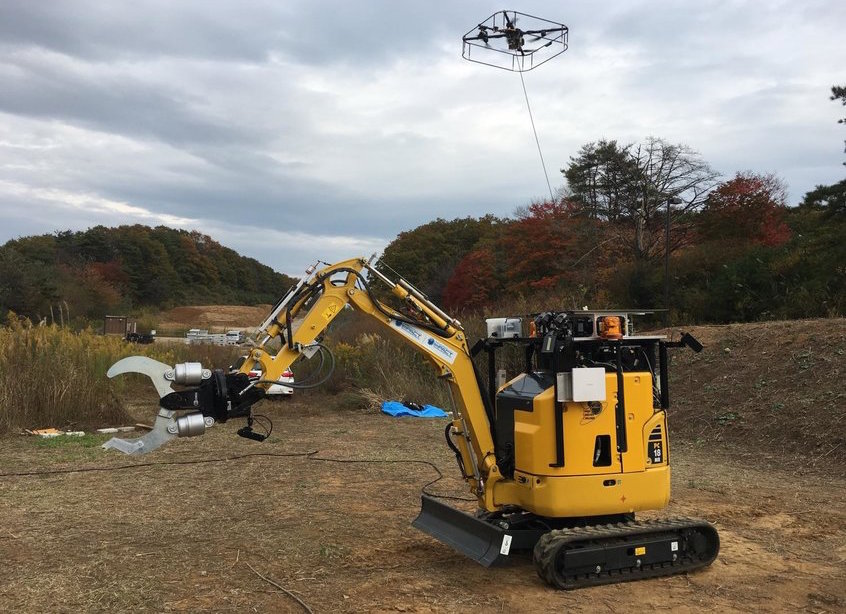Japanese researchers have made a prototype of a construction robot that performs rescue operations with “drastically improved operability and mobility” in disaster situations.
It looks like an ordinary hydraulic shovel but it can bring highly precise force to situations, feeding back resistance data to an operator far away.
Other characteristics include four mounted fish-eye cameras that give the operator superior, real-time visibility of difficult surroundings, according to Japan’s Osaka University.
Tests on simulated disaster sites confirmed its potential, said the university, which has been joined in the project by five other universities and technology institutes.

Rescue robot with a drone (Osaka University)
The following technologies were tested in the prototype, said Osaka University:
- Technology for quickly controlling heavy power machines with high inertia by achieving target values on location and speed through fine tuning and by controlling pressures on a cylinder at high speeds;
- Technology for estimating external load of multiple degree of freedom (DOF) hydraulically-driven robot from oil pressure of each hydraulic cylinder. The estimated force will be used for force control or force feedback to the operator of tele-operated rescue robots.
- Technology for measuring high frequency vibration by a force sensor installed at the end effector of the robot and giving the operator vibrotactile feedback.
- Technology for flying a multi-rotor unmanned aircraft vehicle UAV (“drone”) to the place of the operator’s choice and obtaining image information. Long flights and pin-point landing of the drone are available due to power supply through electric lines and a power-feeding helipad for tethering the drone.
- Technology for presenting the operator images of an overhead view from an arbitrary place by using 4 fish-eye cameras mounted on the robot in real time so that the operator can assess the area surrounding the robot.
- Technology for using a far-infrared ray camera capable of viewing with long-wavelength light so that the operator can operate the robot while assessing the situation even under bad weather conditions like fog.
Involved were Osaka University, Kobe University, Tohoku University, Tohoku University, The University of Tokyo, and Tokyo Institute of Technology.
Research continues.
See more here.
Top image: Robot opens door of a damaged vehicle (Osaka University)










